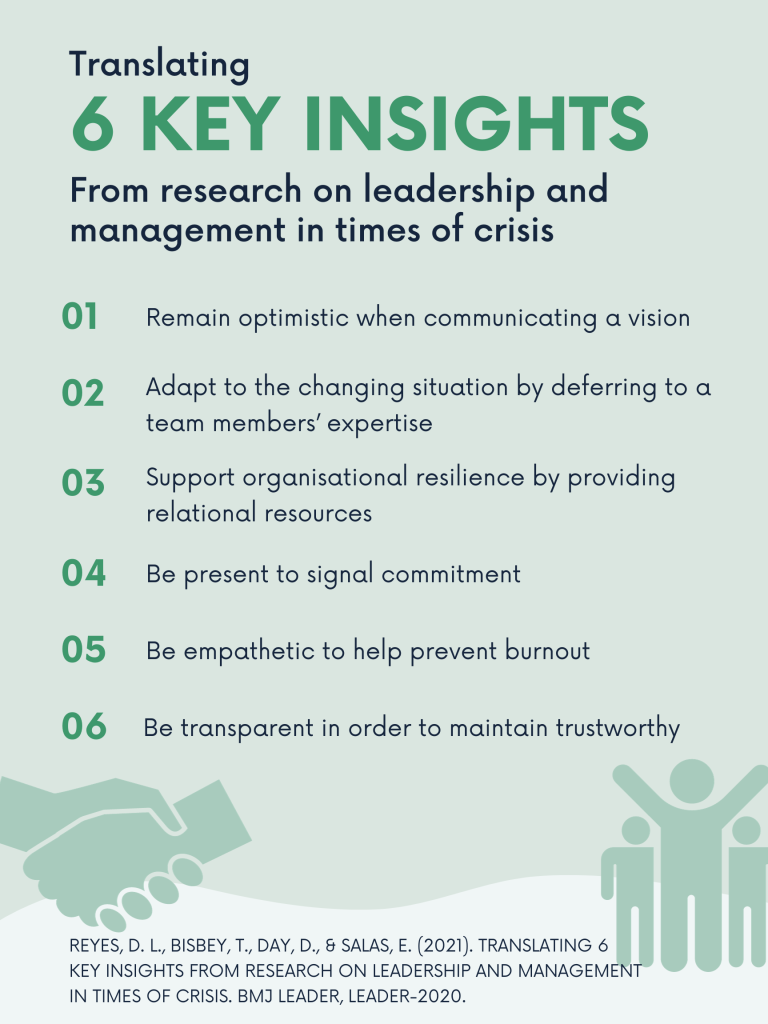By Johnny Nguyen

When in times of crisis, the employees of an organization will always look to upper management and leadership in order to get guidance on what they should be doing, and if there are any preliminary steps, they should take now or resume their normal job roles and routines.
Dr. Reyes and her colleagues dive into research looking in-depth at behaviors and actions that leaders in organizations have taken in order to help support their team, both physically and psychologically.
Our most recent crisis situation was the COVID-19 pandemic, which affected the whole world, however to the people in the front line of this crisis, the healthcare workers, they were pushed to extremes, trying to mitigate the growing numbers of the virus. In order to have been able to continue with the work that they needed to do, they needed to be supported by their workplace organizations in order to do so.
Dr. Reyes and colleagues have found that there are six key behaviors that leaders should exhibit to their employees in order to have a smoother work environment during times of crisis.
The first one was to remain optimistic when communicating a vision, as leaders should be able to demonstrate this no matter the scenario. This allows for the employees to feel confident in their work and maintain their attitude throughout times of crisis, allowing them to perform better.
The second one is to adapt to the changing situation by deferring to team members’ expertise. Leaders should be able to ask their team for their opinions on how they want to be led, especially during these times, giving them the chance to be heard and seen.
The third one is to support organizational resilience by providing relational resources. Leaders should be able to support their workers with any resources that they might need during this time to feel supported, emotionally and physically, to allow them to thrive and not crumble under the pressures.
The fourth one is to be present to signal commitment. Leaders should be readily available when their workers need them, as this shows workers that they are not alone, but have their managers as well.
The fifth one is to be empathetic to help prevent burnout. Leaders should be able to understand how workers feel, especially if they are feeling overwhelmed, and should be able to help support the workers with anything they need, even if it is time off.
The sixth one is to be transparent in order to remain trustworthy. Leaders should communicate any new updates and not hide anything from the workers, especially in times of crisis. This allows for the workers to maintain that level of trust in their leadership.
These are just some behaviors that Dr. Reyes and her colleagues were able to research more in-depth about what leaders should exhibit during times of crisis, but leaders should be able to support their team through these hard times.
To read more in-depth about the six key insights, check out this article here!
Reyes, D. L., Bisbey, T., Day, D., & Salas, E. (2021). Translating 6 key insights from research on leadership and management in times of crisis. BMJ Leader, leader-2020.